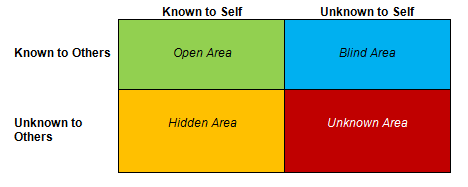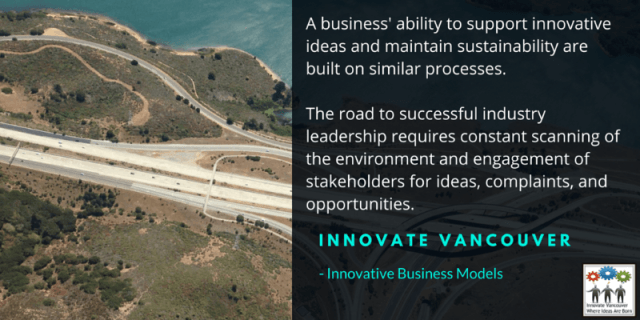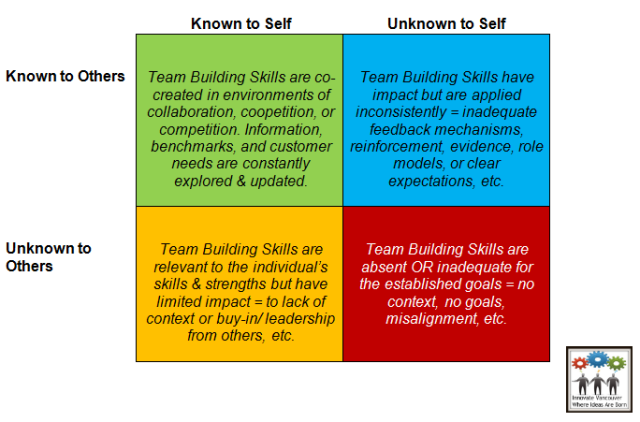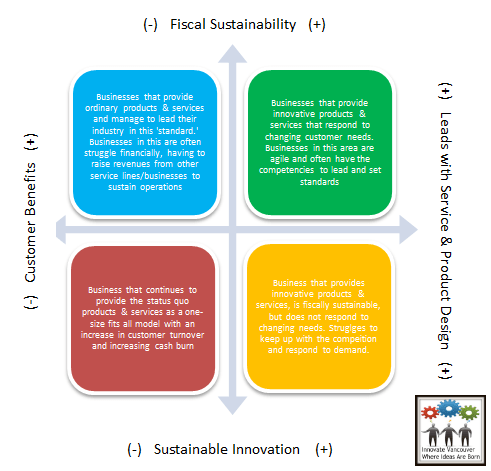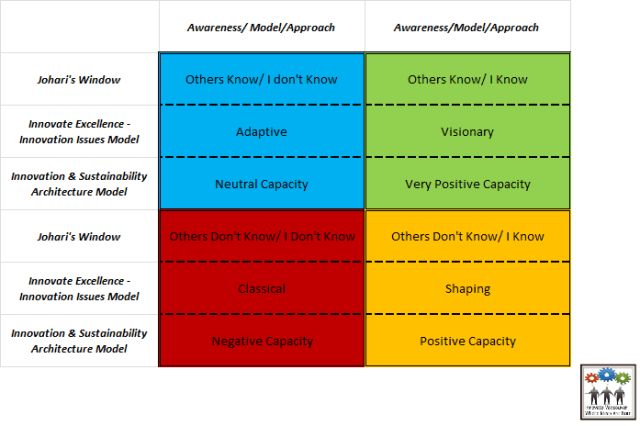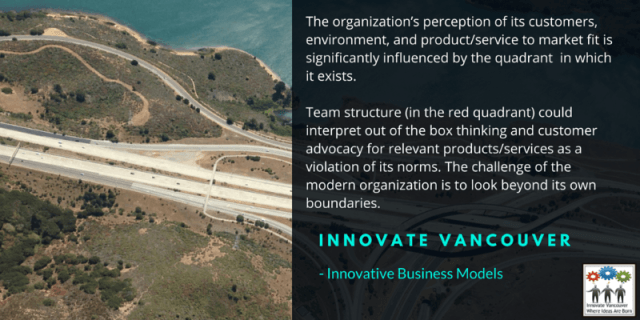I recently came across a job description that mentioned team-structure. This made me think about what the author meant by that term and if there were systems, processes, resources, training, and support in place to truly build and support a meaningful team structure. The job description didn’t explain what the team structure looked like or offer any additional materials to assess efforts and outcomes. I wondered if there was enough commitment behind the term to actually drive the environment toward a shared understanding of what an effective and relevant team structure involves.
Self-awareness is crucial to developing effective teams. Johari’s Window is often used as a tool to help organizations build awareness and identify opportunities for improvement. That model is depicted below.
Johari’s Window
The model measures how much information a person knows on the horizontal axis and how much others know on the vertical axis. When these two axes are combined (horizontal x vertical), four quadrants form to show the different levels of awareness shared between oneself and others. **While this model is often used to assess individual awareness, it can also be applied to evaluate teams, organizations, and market strategies.**
- Each quadrant is colour coded based on the relative risks OR opportunities each area presents for building healthy, agile, and innovative organizations.
- Since organizational alignment is crucial to – team building, generative idea development, creative problem solving, and leveraging opportunities it would make sense that the “known to others x known to self” quadrant (in green) represents the greatest opportunities for growth.
- Organizational cultures that fall within the other three quadrants (emphasizing blue and red sections) are less likely to represent these attributes due to the lack of alignment and shared assumptions, etc.
So the question becomes what can organizations do to strengthen their internal/external alignment & build upon existing capacities for innovation and generative learning? There is no simple answer, but the following framework is often referenced:
- Goals: Agreeing on the goals and outcomes desired by the organization
- Metrics: Next, identify how you will measure these outcomes.
- Roles: The organization then needs to agree on the resources, strategies, and participants that will be involved.
Organizational cultures that fall within the yellow and green quadrants also represent traits that support market/industry leadership. When alignment is paired with environmental scanning and customer engagement the organization’s opportunities to improve its product/service offerings is increased. The organization’s mission is strengthened, customer satisfaction is increased, and the community is better served. This is even more likely in non-captured markets.
Johari’s Window & Team Building Competencies (adapted)
Measured along different (but interdependent with the above) dimensions is the business model matrix (shown below). Each quadrant represents a different business model x market mix. Different business models thrive in different environments and are also a result of different market patterns. Although each business model type has its advantage the goal is to increase customer satisfaction, retention, and product/service relevance throughout the life-cycle. When examining innovative capacity the following model can be compared with previous discussions based on the colour coding system (used above) to yield additional insights.
Innovation & Sustainability Architecture Model
Ralph Ohr (in Innovative Excellence, 2016) distinguishes between classical, adaptive, shaping, and visionary business models. The job description (team-structure) discussed at the onset of this article warrants additional clarification in order to determine which business/market quadrant (see graphs) will be realized.
Organizational cultures that reinforce innovative ideas, generative learning, and iterative improvements of existing product/service offerings are also more likely to experience financial sustainability, realize customer benefits, deliver sustainable innovation, and lead the industry with service & product design standards. These represent significant advantages that often demand increased market share.
Innovative Capacity Matrix
Organizational alignment, innovative ideas, and generative learning are unlikely to occur without sufficient awareness, appropriate goals, and reinforcement of desired behaviours. With an increase in these characteristics organizations have the opportunity to transition from classical business models (and their benefits) to adaptive, shaping, and innovative business models. The corresponding benefits realized from each iterative stage is well worth the effort. Both the organization and its customers benefit as assumptions are tested, beliefs are re-valuated, and product/service offerings are improved.
Innovation by definition requires out of the box thinking. Developing product & service offerings that meet changing customer needs requires vision and deliberate goals to continuously improve. Feedback mechanisms, organizational awareness & alignment, customer engagement, environmental scanning, and other mechanisms that support innovative thinking are just the first steps towards building a sustainable, effective, and adaptive organizational culture.
What is your organization doing to create a culture of innovation? Leave your comments below.
